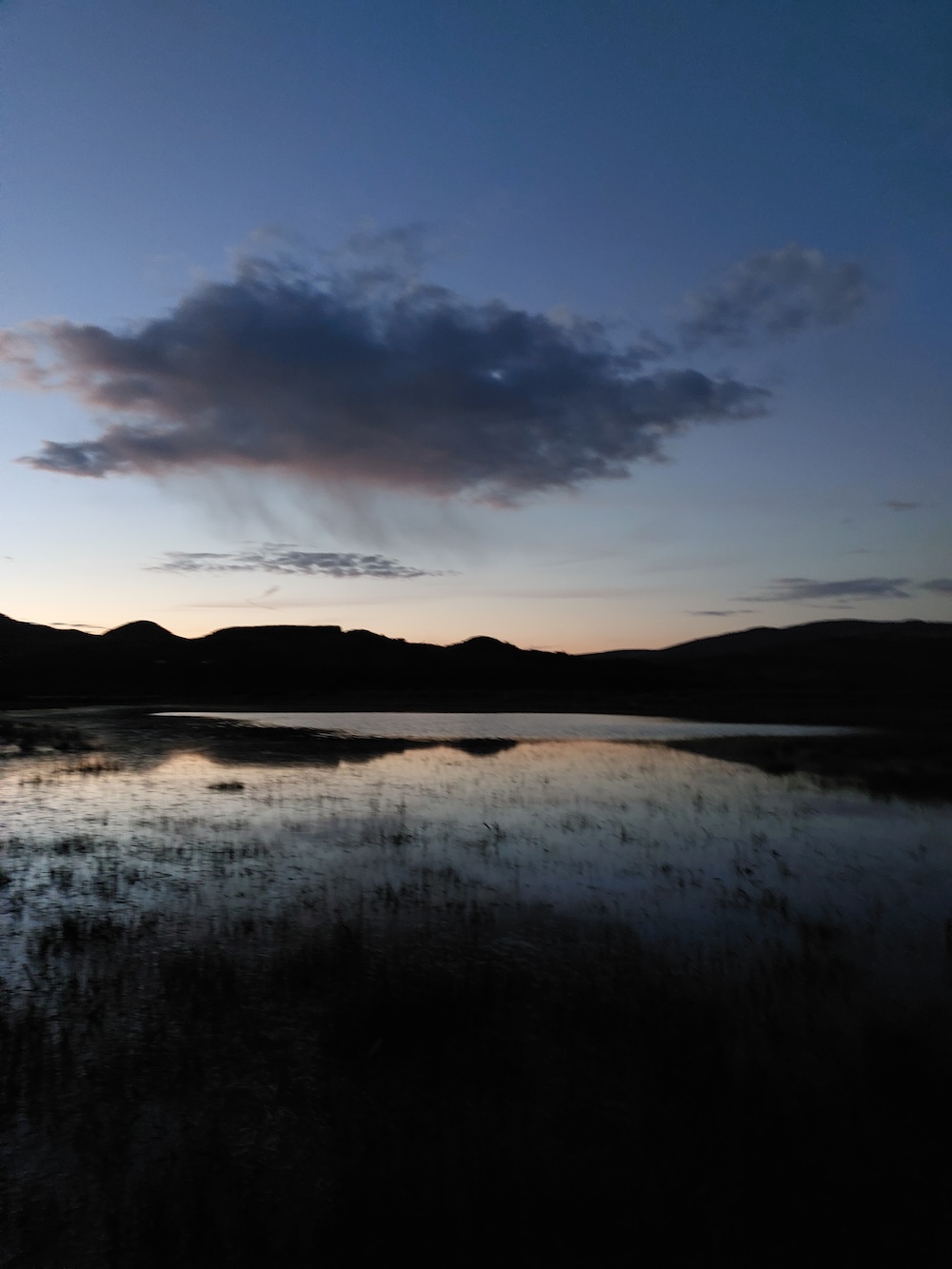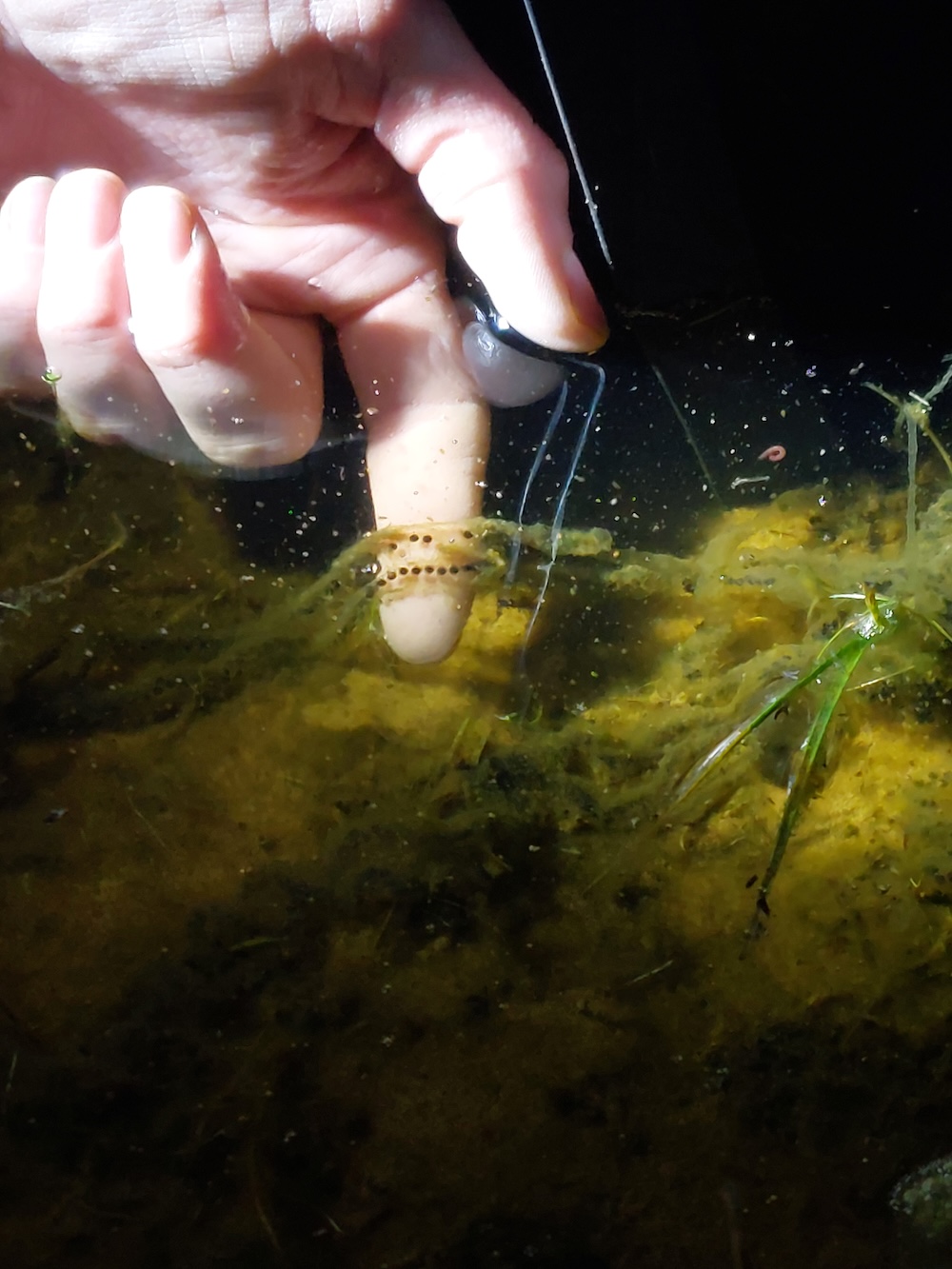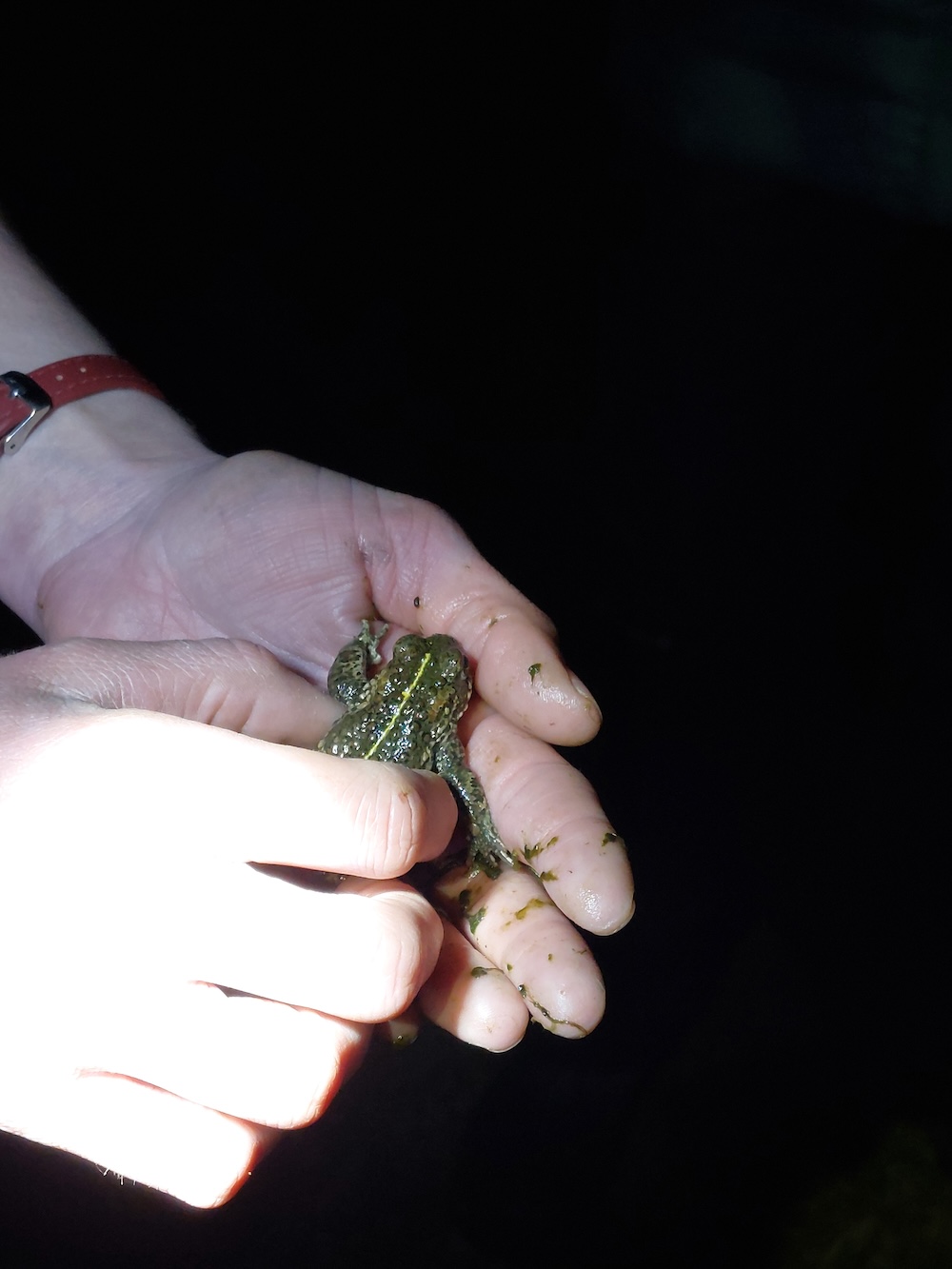On the Solway coast, Stephen Rutt searches for a chattering, green-eyed, gilt-edged toad — the ultimate species of the edge.

Dusk. Low tide at Mersehead Beach. A vast area, earlier there had been 50 miles of light shining down the Solway Firth to the Isle of Man; now dark clouds are building, edging the scene. The crinkle-cut hills and headlands of Galloway are cast in silhouette, one half of a great jaw; the Cumbrian fells the other half and the firth a great tongue of mud and sea and space; greying as the day is dying. The firth is trying to speak and we are trying to hear, all 15 of us on the guided walk as we stare at the Solway dusk.
“Here’s a hint. Cup your ears…” says Rowena Chambers, warden of the RSPB’s reserve here, “…it helps you hear twice as well.”
When we gathered by the visitor centre half an hour ago, the sand martins had chattered, the pre-roost flock skittering in front of clouds; swallows streaked amongst them, singing and flying in fast forward, full of frantic grace. Shelduck wings creaked – barnacle geese barked percussion, lapwings whooped – a meadow pipit reached the height of its flight, splayed its wings out and drifted to earth like a feather; singing a shrill ecstasy of shreeps. Above, an unseen snipe wobbled through the sky, its outer tail feathers whispering, an unsung song sounding like a half-formed thought, equivocated in real-time.
Now – with hands cupped around our ears – we hear the sound we have come for, a faint rattle drifting over the dunes. Natterjack toads. Common toads squeak and frogs croak. Natterjacks chatter; a dry, soft rattling, a one-note xylophone flourish played through the empty space of the Solway. It is, I’ve read, Europe’s loudest, audible up to a mile away, though not on a cold night like tonight.

We duck under a fence and head towards the sound. The darkness is almost total. The bat detector crackles with the lip-smacking sounds of soprano pipistrelles and the toad chorus is strengthening, the xylophones played with more feeling. Then it ebbs. A few quiet minutes pass before it strikes up again. Under torchlight, Rowena shows us the strings of natterjack spawn – a thin line of black peas in a metres-long clear pod, coiled around the grasses in the pool. The tadpoles are a few metres further in, the water deeper, past boot height but – sod the socks – I step in anyway, feeling the water, warmer than the air, pooling around my toes. The toads are now black grains of rice, wriggling in a smaller pool of light, showing up against the suddenly luminous algae.
Rowena has a license that enables her to handle the species and to walk and work among them. The natterjack is the UK’s rarest amphibian: protected as spawn, tadpole and adult, it is illegal to disturb them or damage the habitat at the sixty or so places left in Britain where they can be found. By guiding and showing them to us, we can witness the species safely, at a respectful distance, newly aware of their life.
Walking back from the pool’s edge she plucks an adult from the water. Cradling it in her cupped hands like a precious thing, it glows under the light of a torch. That same shade of luminous new-leaf green as the algae but patchy, mottled over a sandy grey skin. Each individual natterjack has a unique braille of warts: this one has a series of perfect circles raised over its back. It shifts in Rowena’s hands: the dark vocal sacks under the throat tell us he is a male. She explains their biology further but I am distracted. He is beautiful. The eyes – the wide black pupils edged by a bright green flash of iris. Running down his back is a yellow line. Until now, I had understood this as being like a blade of dead grass. But now under the light it glows bright like gold, like a gilt-edged toad.
Shortly Rowena returns him to the water.

***
We walk back by the path. I hang back, clinging on to the sounds, watching the rest walk ahead in their sphere of torchlight. The natterjacks have quietened now; the birds too, bar the odd barking from a barnacle goose, the dominant sound now is the water rippling through the burns that run through the saltmarsh here. The clouds have parted and the plough cuts a furrow of starlight in the dark. The temperature drops. At the bright lights of the visitor centre we all say goodbyes, all delighted to have been in the presence of a species so special.
Later, over the harsh rock of the pub jukebox, Liam Templeton of the Amphibian and Reptile Conservation Trust tells me that the natterjack’s future here is uncertain but holds promise. ARC and the RSPB are part of the Species on the Edge project, a collaborative conservation programme helmed by NatureScot that recognises the need for cross-pollinating knowledge across conservation charities. The natterjack’s need is great – it is a hostage to its own biology. Their niche in Scotland is the ephemeral pools of the upper saltmarsh. Their needs are specific: an average night temperature of seven degrees to emerge from hibernation (the frost this morning an exceptional blip, this stop-start spring fragmenting the season). They need shallow pools with slightly saline water that persist for the breeding season but dry up shortly afterwards to reduce the chances of predatory dragonfly larvae or voracious common frog or toad tadpoles that dominate or eat the natterjack tadpoles. Once the adults have spawned, they crawl off back to the dunes, their temporary spell in the wetlands completed. They can repeat this for a decade, if lucky.
And they have been lucky here, so far. Mersehead has become one of the best sites for them in Britain – unusually for a warm-weather species, predominantly found in Spain, France and the Netherlands – but here where there are no more to the north or west, this is the ultimate edge for them. Occupying this thin line of wet land between the dry ground and the sea is naturally risky. So too is their reliance on ephemeral pools, the transience of weather, the risk of the sea, the increasing extremes of the climate. The plan is to assist their crawling up and down the coastline here. Creating the right habitat nearby, increasing the length of edge they can live in and allowing the population to spread. More habitat means that their luck is more likely to hold. That their biological gamble on the nature of water and land will succeed somewhere in the area once a year. It is a hedged bet for this ultimate species of the edge; the green-eyed, gilt-edged toad.
*
Stephen Rutt is a writer and naturalist, specialising in creative non-fiction prose and birds. He is the author of ‘The Seafarers’ (which won the Saltire Society’s first book award), ‘Wintering’ (one of The Times’s best nature books of the year for 2019) and ‘The Eternal Season’. His writing has also been published in The Guardian and The Scotsman. He can be found on Twitter here and Instagram here. His website is here.